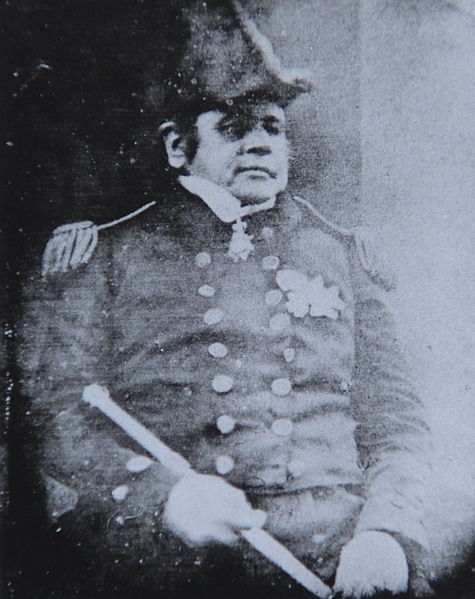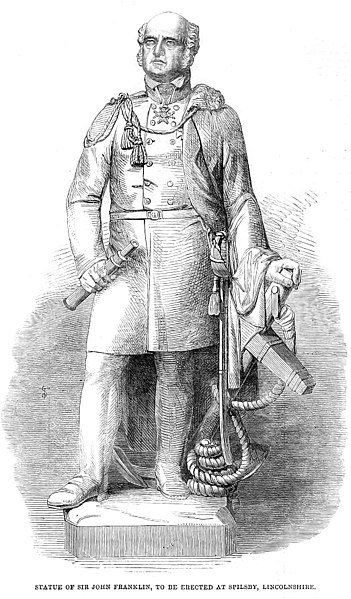The Coppermine expedition of 1819–1822 was a British overland undertaking to survey and chart the area from Hudson Bay to the north coast of Canada, eastwards from the mouth of the Coppermine River. The expedition was organised by the Royal Navy as part of its attempt to discover and map the Northwest Passage. It was the first of three Arctic expeditions to be led by John Franklin and also included George Back and John Richardson, both of whom would become notable Arctic explorers in their own right.
Sir John Barrow was the driving force for the Royal Navy's exploration of the Arctic in the early-19th century
Constructing a camp during the first winter of the expedition
Native chief Akaitcho with his son
Winter at Fort Enterprise
Sir John Franklin was a British Royal Navy officer and Arctic explorer. After serving in wars against Napoleonic France and the United States, he led two expeditions into the Canadian Arctic and through the islands of the Arctic Archipelago, in 1819 and 1825, and served as Lieutenant-Governor of Van Diemen's Land from 1839 to 1843. During his third and final expedition, an attempt to traverse the Northwest Passage in 1845, Franklin's ships became icebound off King William Island in what is now Nunavut, where he died in June 1847. The icebound ships were abandoned ten months later and the entire crew died from causes such as starvation, hypothermia, and scurvy.
1828 portrait by Thomas Phillips
Daguerreotype photograph of Franklin taken in 1845, prior to the expedition's departure. He is wearing the 1843–1846 pattern Royal Navy undress tailcoat with cocked hat.
Engraving of Charles Bacon's statue of Franklin in Spilsby in 1861, prior to its installation
"Discoverer of the North West Passage" – a disputed or exaggerated claim on Matthew Noble's 1866 statue of Franklin, Waterloo Place, London








